Improving processes and workflows, one idea at a time
From VR meetings to solutions that “make hackers sad”, a lot of great ideas came out of the 4th edition of Remote Innovation Days at Dynatrace. Let’s have a more detailed look into the projects that made it to the finals.

Innovation Days is an event that takes place multiple times a year at Dynatrace, where employees have the chance to spend 24 hours developing their own ideas and prototypes. Any idea or project goes, they just need to present their results!
In one of our last posts on the blog we peeked behind the scenes of Innovation Days at Dynatrace and spoke to one of the organizers to learn more about it:
How online innovation days brought our remote labs closer together
Now that the Remote Innovation Days from March 2021 are over, let’s have a look at the ideas that got the most points and went to the finals. In total, we had 25 projects and teams participate this edition, and it was a truly international event, with participants from the US, Spain, Austria, and Poland. Some of the teams were even cross-lab, we saw engineers from Barcelona and Linz work together, as well as Graz and Detroit collaborating over different time zones.
We’ve seen a wide range of projects and ideas being implemented and we are in awe at what some teams could create in just 24 hours. So why not take the time and space to showcase them properly?
ACE Multi Cloud Network App
One of the best ideas from Remote Innovation Days was the ACE Multi Cloud Network App dashboard. The team came up with this to simplify the way the Dynatrace cloud network is displayed.
Currently there is no way to view all the information about the network in on place, instead there were different dashboards depending on the providers (AWS, Azure, and so on) and there was only one world map displaying the location of AWS routers. The team could leverage the cloud integration of Dynatrace with AWS and Azure to get all the metrics they needed to create the following map:
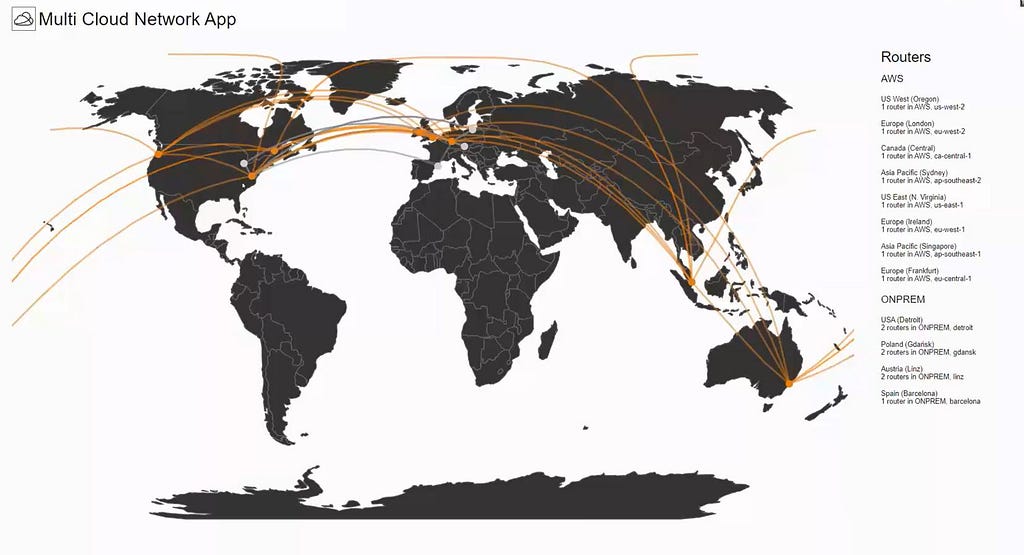
The orange routers are in the cloud, the grey ones are on-prem. If you click on the connections or on the routers you can see further details and metrics.
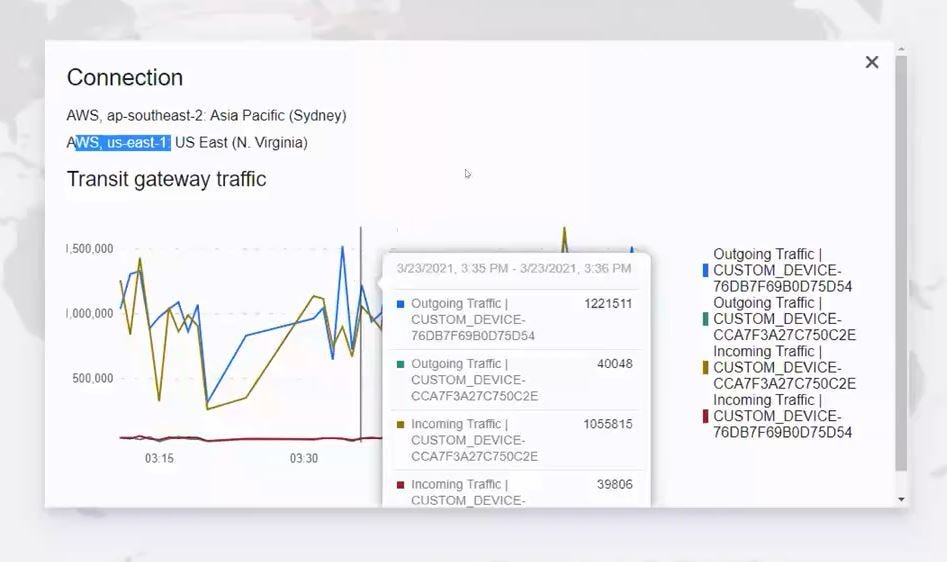
Now that the information is not spread out over multiple dashboards, the team can optimize their own workflows to get better insights in what’s happening in the network and better analyze bugs.
Automated Confusion
This project had the goal of “making hackers sad”, as the Linz-based team speaker Mario Kahlhofer puts it. The team developed a way to secure our code from Dependency Confusion attacks. Dependency Confusion is a new type of supply chain attack that has already affected big players in the IT space.
In short, with npm you can upload code packages from both public and private repositories to your projects. In your package.json file, you can specify these types of dependencies, and when you hit npm install, it will query both the private and the public repositories to find them. The problem is that if you have two packages with the same name but with different versions, the npm will always take the newest one. So, if somebody would discover the name of the npm package in your private repository, they could upload a malicious one with the same name but with a newer version to the public repository, thus opening your code up to a vulnerability.
The team developed this logic to remediate this:
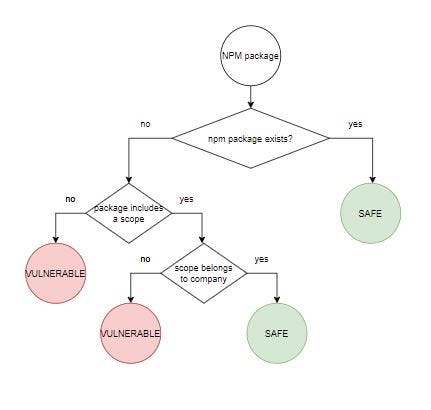
If the scope of the package does not belong to the company, it could be vulnerable so it will not be uploaded.
Automated Confusion is an already running tool that shows you all the tenants and the vulnerable processes in this tenant. By clicking on the vulnerabilities, developers have access to more information about the vulnerable packages that do not have a trusted scope.
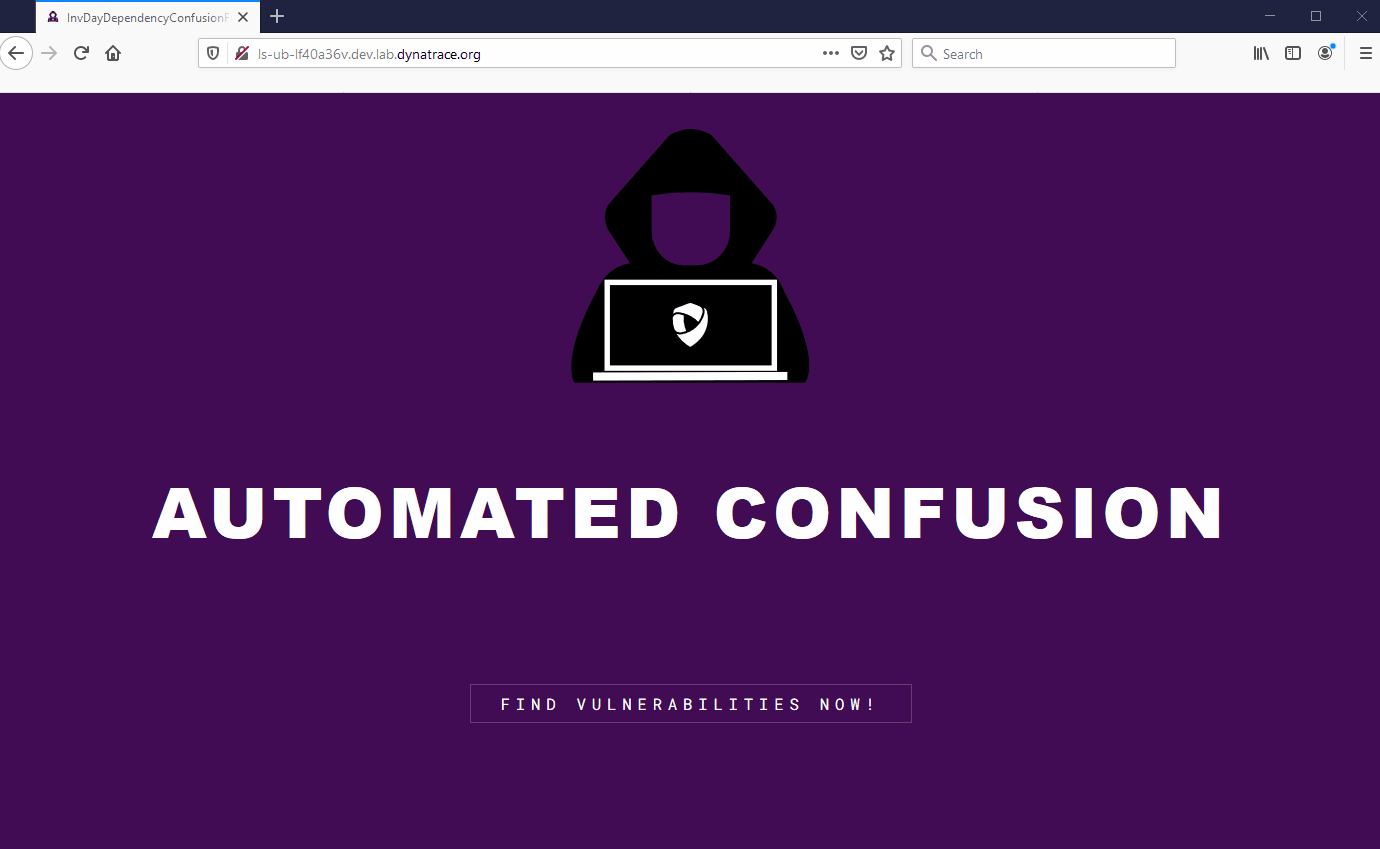
If you see the sad hacker image, it means that you are safe, and the hacker is sad cos he can’t hack you.
Jira Board Summary
This project was born out of the need for a more efficient and faster way to filter tickets in Jira. The Quick Filter option that comes out-of-the-box with Jira does not give you the possibility to have an overview of the number of tickets, and it also works very slow. Furthermore, if you look for the number of tickets in the backlog view you do not get accurate results, because their counter doesn’t take sub tasks into account.
That’s why the team decided to write a script to make the filtering more efficient.
By installing the Tampermonkey extension in your browser, you can install the script and the filtering options will be visible on the right side of your screen.
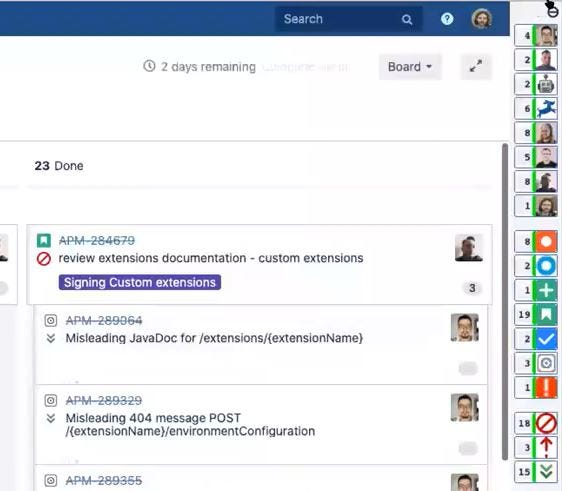
The app gives you an overview of the users assigned to tickets, categories, and priorities and the number of tickets in each section. If you click on one of them, the Jira board gets filtered. You can also apply multiple filters at the same time.
You can also remove all items of a certain category from the board and not display them.
It can also be used in combination with the Quick Filters, and the numbers on the right will then update automatically based on what is visible on the board. Furthermore, this filtering system works both in the Kanban as well as in the Backlog view.
Many teams at Dynatrace were impressed by this tool and many have already implemented it in Jira. This project is a great way to show how one small thing can improve workflows at a large scale.
Further projects
There were also a lot of great projects that made it to the final but did not gather enough support to get to the top. Let’s have a quick look at what these teams came up with, in no particular order.
Mother Finally Approved”; drop table user
This team’s goal was to find a way to implement Multi-Factor Authentication for all of their clients and to be able to do it in one day.
The judges were amazed that they managed to make a fully working prototype in such a short amount of time, so that’s why they were tied for the first three spots. Eventually the popular vote was the tiebreaker and they didn’t make it.
It’s easy to configure MFA on your account, the few simple steps take only 20 seconds.
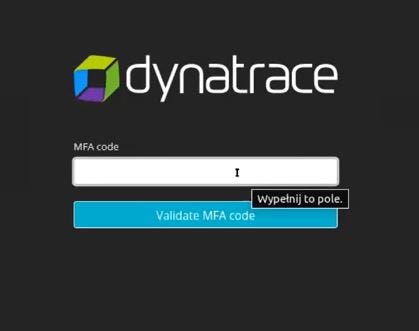
And if you do not have your Authenticator token readily available or you lose your phone, you can always get in touch with the internal SSO team to disable MFA for your account.
Whether you have 20 seconds to spare or not, configuring MFA on your account is always a good idea!
Slack Moderator Bot — Ada Clever
The metrics team at Dynatrace has created a slack channel where developers can ask questions. However, this channel is often spammed by other colleagues asking things that the metrics team does not have an answer to. This is disrupting because somebody needs to take the time to reply and tell people they’re in the wrong place.
The idea was to create a slack moderator bot (which they named Ada Clever) that recognizes if a question is right (ham) or wrong (spam). If the question is wrong, the person writing it will receive an automated message redirecting him to another Slack channel.
The team used the Slackbot Java API and trained it with the current content of the chat, by manually marking example questions as spam or ham.
Ada Clever is already up and running but would need more time to learn how recognize if a question is correct or not.

IP-Scout
The IP scout is a service that collects all the information it can find on an IP address. Since this data is distributed between AWS, Azure, Tenable and so on, there is no one source of truth, and consequently information needs to be searched for manually and it takes a lot of time.
That’s why the team developed little scouts travel around the landscape of data and uncover all the valuable information that is needed and collect it. They can access all the data that you can’t access manually, and they do it in a fraction of a second.
Use Cases
In the team’s daily work at Dynatrace, there are two main cases where the IP scouts can be used: Log Analytics and Jira Tickets.
Log Analytics
While analyzing the Log Analytics, you often see IP address listed and you do not know what is behind them, so you need to invest a lot of time into searching for more information about them.
Here the scouts can help you and provide you with all the information that could be found on the IP address. The idea is that by selecting the IP address on the list, you are given the option to view more information in a pop-up. However, this particular functionality is not 100% implemented yet.
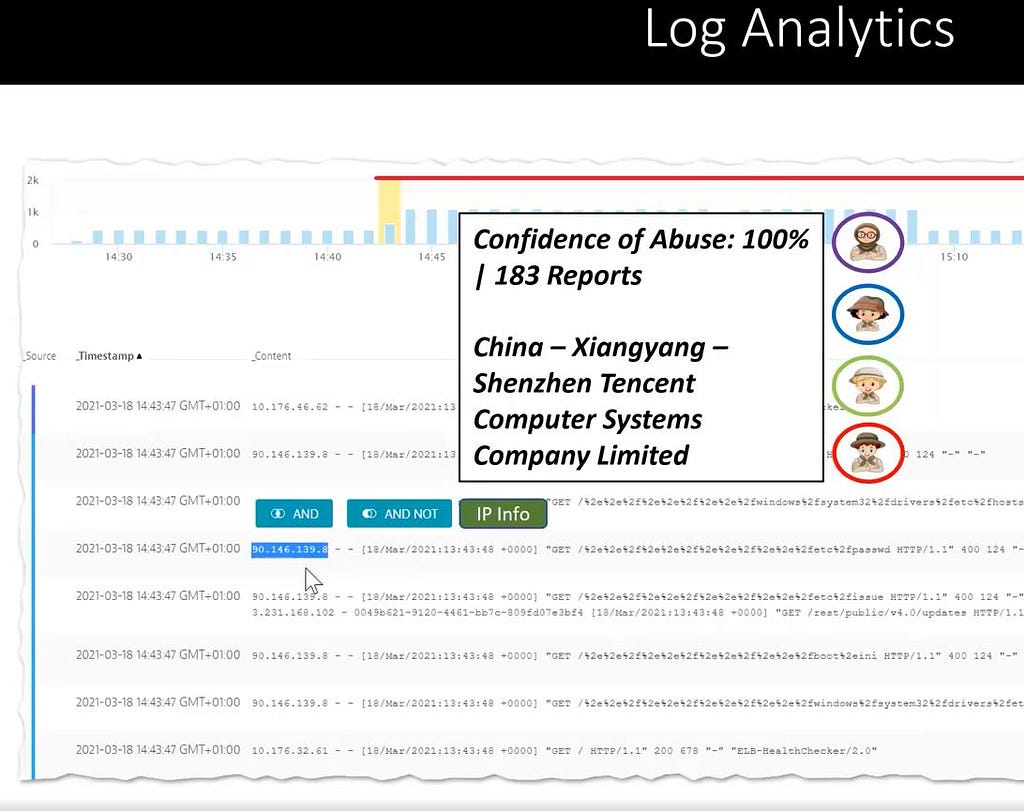
Enriching Jira Tickets
At Dynatrace there is a ticket system that produces automatic tickets if an attack is detected. This ticket has some information, like the impacted entity and the IP and ISP, but nothing more. Here the scouts can help and add the missing information that would otherwise be searched for manually.
This includes potentially:
- The location of the impacted entity and the name of who is responsible for it.
- More information about the malicious IP like the geographical information, and which provider it belongs to (like Tenable).
- Further information about internal IPs, like name and location.
V-A-M — Virtually Augmented Me
The inspiration for this project came from the fact that we have been working remotely for the best part of a year, so the team wanted to make online communication more interactive with the use of both augmented and virtual reality.
The idea is to place tags around your room that represent each of your teammates. Then by scanning these tags with the phone, you can get more information regarding their status or even start a call with them directly. You can also communicate with them via VR-headsets. Since everything is running in the browser, the virtual reality call is compatible with every headset.
This idea can be expanded, and it has a lot of potential. It already supports grabbing objects, but the team did not have time to finish developing this functionality.
The team can also imagine using this functionality for team meetings where you can pass each other documents or show 3d dashboards.
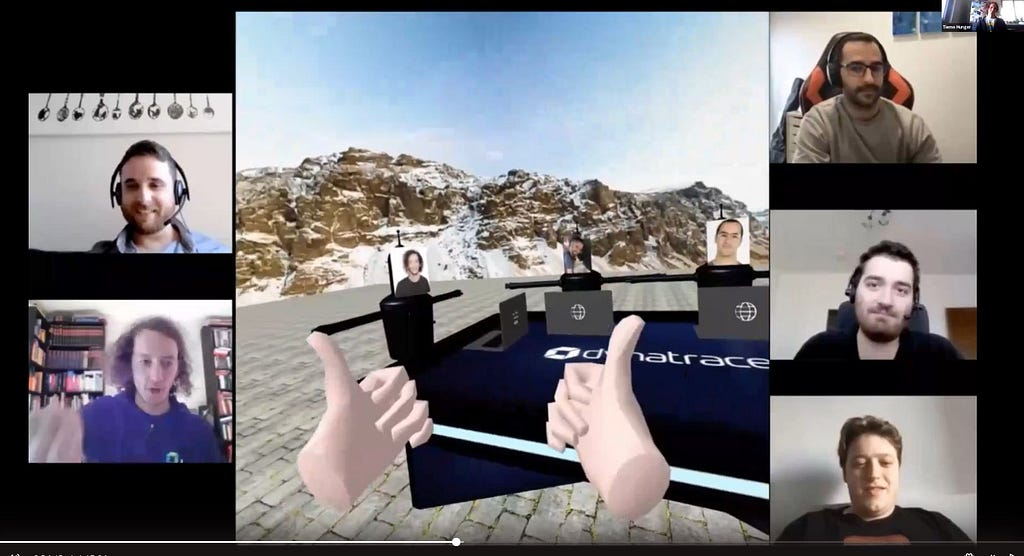
NoCode UI Editor a.k.a. Cody
This team’s mission was to create a UI editor similar to Figma, where you can create your own application without any coding skills or a local setup. You do not need to know upfront what components are available, since everything should be available for you in the UI.
The team managed to make a working prototype, but it does need extra work to add more components and editing capabilities.
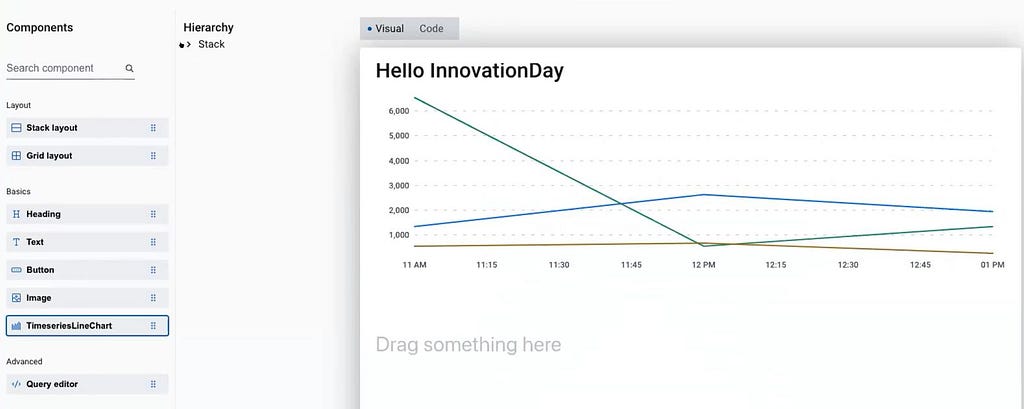
Coming up
Dynatrace holds Innovation Days multiple times a year, so stay tuned for the next event and the ideas our innovative colleagues may come up with.
Does your heart also beat for innovation?
Check out our careers page for all our current open positions across the globe. You never know, you might be part of the next winning team at Dynatrace Innovation Days.
Improving processes and workflows, one idea at a time was originally published in Dynatrace Engineering on Medium, where people are continuing the conversation by highlighting and responding to this story.
